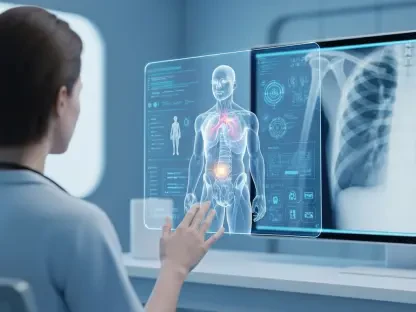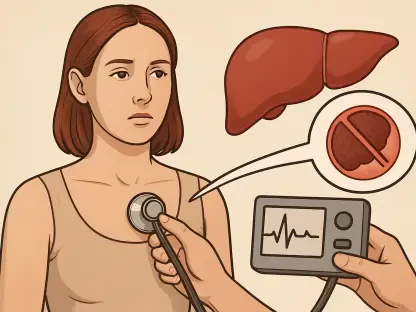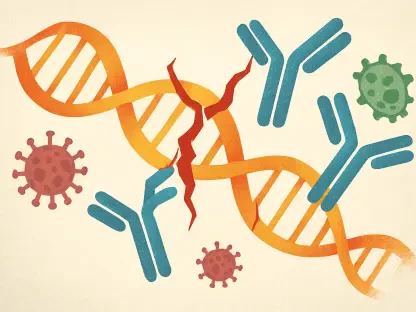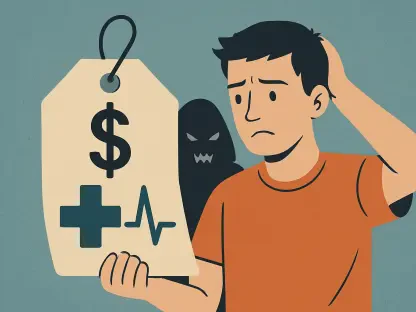Childhood cancer continues to be a daunting global health challenge, affecting around 400,000 children annually. Early diagnosis remains a cornerstone for improving the survival rate and quality of life for these young patients. In 2018, the World Health Organization (WHO) launched the Global Initiative for Childhood Cancer (GICC) with an ambitious target: to achieve a two-thirds remission rate for childhood cancers by 2030. This initiative underscores the urgency of early diagnosis, aiming to potentially save the lives of approximately one million children. Despite the prevalence of childhood cancer, the pathway to a prompt diagnosis is riddled with obstacles, such as reliance on symptom recognition by both the public and healthcare professionals, and access to diagnostic technologies. These challenges are especially pronounced in the UK, where the lack of pediatric-focused national cancer control plans hampers efforts for swift diagnosis and treatment.
Current Obstacles in Childhood Cancer Diagnosis
Public and Healthcare Professional Awareness
Recognition of early symptoms in childhood cancers is crucial yet frequently inadequate, leading to delays that can be detrimental to patient outcomes. Public awareness campaigns are instrumental in bridging this gap, as evidenced by the UK’s HeadSmart initiative. This effort focused on childhood brain tumor diagnosis, shortening the time taken to reach a diagnosis by enhancing symptom awareness among both the public and healthcare providers. Such awareness can dramatically affect outcomes by expediting the diagnostic process, thus enabling more timely treatment interventions. The complex nature of symptoms, often mimicking benign childhood illnesses, further complicates timely diagnosis, necessitating a concerted effort in educational outreach and training for healthcare professionals.
Accessibility and Advances in Diagnostic Technology
Significant gaps in accessibility to healthcare and advanced diagnostic tools further exacerbate the challenges in early cancer diagnosis. These factors contribute to substantial diagnostic delays, a critical issue in a condition where every day counts. In the UK, efforts to address these gaps by incorporating cutting-edge technologies in diagnostic protocols are still emerging. Advancements such as more sophisticated imaging technologies and genomic testing hold promise in reducing diagnostic intervals. However, the healthcare system’s capacity to integrate these technologies into routine medical practice remains limited. This is particularly true in rural and underserved areas where healthcare infrastructure may fall short of what is needed to support these advanced diagnostics.
Analyzing Diagnostic Intervals and Outcomes
Statistical Insights from Recent Studies
A pivotal study published in The Lancet by Dhurgshaarna Shanmugavadivel and associates provided an in-depth evaluation of diagnostic intervals for childhood cancer in the UK. Employing a population-based observational approach, the study analyzed data to calculate patient intervals, diagnostic intervals, and total diagnostic intervals (TDI). The dataset, drawn from the UK’s central treatment centers for pediatric cancer care, comprised 1,957 participants under 18. Results indicated that 74% of children had one to three healthcare appointments prior to diagnosis, with a staggering 67% diagnosed following emergency presentations. Astonishingly, only 2% were diagnosed through incidental findings.
In examining TDIs, bone tumors presented the longest median interval of 12.6 weeks, followed by carcinoma/melanomas at 9.6 weeks, and Langerhans cell histiocytosis (LCH) at 8.8 weeks. Importantly, these intervals did not show significant variations across different ethnicities or sexes. Conversely, diagnostic intervals tended to lengthen with patient age, reflecting patterns noted in earlier studies such as the BRIGHTLIGHT research, which identified a median TDI of 8.9 weeks in adolescents and young adults aged 12 to 24. This persistent stagnation in diagnostic timelines highlights the pressing need for a strategic overhaul to align existing procedures with WHO’s global remission objectives.
Consequences of Delayed Diagnoses
Delayed diagnosis can have dire repercussions, extending beyond immediate physical health impacts to long-term psychological effects such as increased depression risks. Research indicates that protracted diagnostic timelines, particularly when they exceed two months, are significantly correlated with greater depression rates in patients. This underscores the critical nature of prompt interventions not only in improving survival rates but also in mitigating long-term negative emotional outcomes for patients and their families. These findings emphasize the necessity of systemic changes to accelerate diagnosis processes, which could markedly improve both immediate and long-term health outcomes for young cancer patients.
Strategies for Improvement and Replicability
Building Upon the HeadSmart Model
The success of the HeadSmart campaign in the UK serves as an exemplary model in the stratification of symptomatology, particularly for brain tumors. Its approach effectively curtailed diagnosis times, thereby improving overall patient outcomes. This model could potentially be replicated for other types of childhood cancers, such as Hodgkin lymphoma, which saw approximately 193 diagnoses among children and adolescents under 19 in the UK this year. Adapting similar initiatives for various cancer types could drastically lower TDIs and enhance patient prognoses, reinforcing the strategy of specialized, targeted campaigns to raise symptom awareness and expedite diagnosis timelines.
Calls for Comprehensive Policy and Practice Reforms
Achieving substantive progress in childhood cancer diagnosis requires an integrated approach, encompassing policy reforms and practical interventions. Development and implementation of comprehensive national campaigns that enhance symptom awareness across all childhood cancer types are imperative. These initiatives should focus on equipping medical professionals with the necessary skills and resources to recognize and diagnose these complex diseases promptly. Alignment of these reforms with WHO’s remission goals is critical, mandating a concerted effort from both healthcare institutions and governmental bodies to drive meaningful change.
Reflecting on Path Forward
Identifying early signs of childhood cancers is essential, but it is often inadequately addressed, leading to harmful delays in diagnosis and treatment. Public awareness campaigns play a vital role in addressing this issue. An example of such an initiative is the UK’s HeadSmart campaign, which successfully reduced the time needed for childhood brain tumor diagnosis. This was achieved by increasing awareness of symptoms among the public and healthcare professionals. When the recognition of symptoms is enhanced, it dramatically improves outcomes because it allows for quicker diagnosis, facilitating timely intervention and treatment. The challenge lies in the symptoms often resembling common childhood illnesses, making prompt diagnosis difficult. This similarity necessitates a combined effort in educational outreach and professional training for healthcare workers. By ensuring that both the public and healthcare providers understand these early signs, the potential for quicker and more accurate diagnoses increases, ultimately improving patient outcomes significantly.









